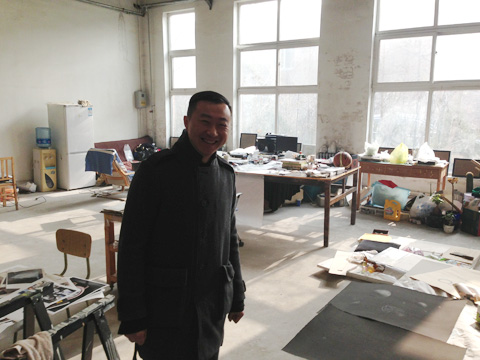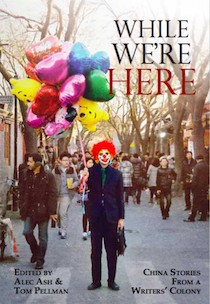Boredom and inspiration
Fragments from an artist’s mind
Contemporary artist Guo Hongwei’s fridge is full of Chinese yam. I assumed he had a taste for it. It turns out he is mushing them into paste to use on canvas. Art over hunger.
Just a short titbit today, snatches of a conversation I had with Hongwei when I visited his studio a short ride from Beijing’s 798 art district. It’s a large space with high windows and a dusty musk. Various surfaces are covered in sketches, photographs, cuttings, pressed leaves, dead butterflies, scissors, protractors, cups of tea, rolls of loo paper, an old sewing machine and a basketball. In one corner is a golden disco ball. On his shelves the book titles vary from “The Roaring 20s” to “Human Anatomy”. Next to the bookshelf is a female manikin wrapped in cellophane with a flesh-coloured thong draped over one hand. Kinky.
I asked Hongwei where he found his inspiration.
“To me, inspiration is a very strange thing. I call it the ability to feel (感受力). The stronger your ability to feel, the better your perception and analysis of the outside world. This ability is innate. It’s a very important thing to me. If we look at the same thing, why is the difference between [our perceptions] so big? Why is one person’s understanding of the world and what’s in it different to others, so unusual or interesting as to inspire him? To me, inspiration is also a composite thing, and sometimes it needs training, through understanding the work of other artists, through reading, through feeling your life, and through boredom.”
Boredom?
“Boredom is a very useful working tool. When you’re genuinely bored, you can sit down and think about things you don’t consider when you’re busy. At times like these, you can you feel the natural state of your existence. When you’re doing something else, your consciousness is constantly working ... But when you’re bored, that time becomes more important.
When you feel very busy, you should just stop. Find a place and don’t do anything. In that moment, some new thoughts can arise from unfathomable connections. I don’t know where the logic is, but in times of boredom you can think about a problem more clearly, you can connect two different things, or you can see more clearly what it is you really want.”
There you have it. Boredom, art and yam. And how a mind’s miscellania, like the random assortment of objects in a studio, can find their creative connection when you stop still and do nothing.
•


















